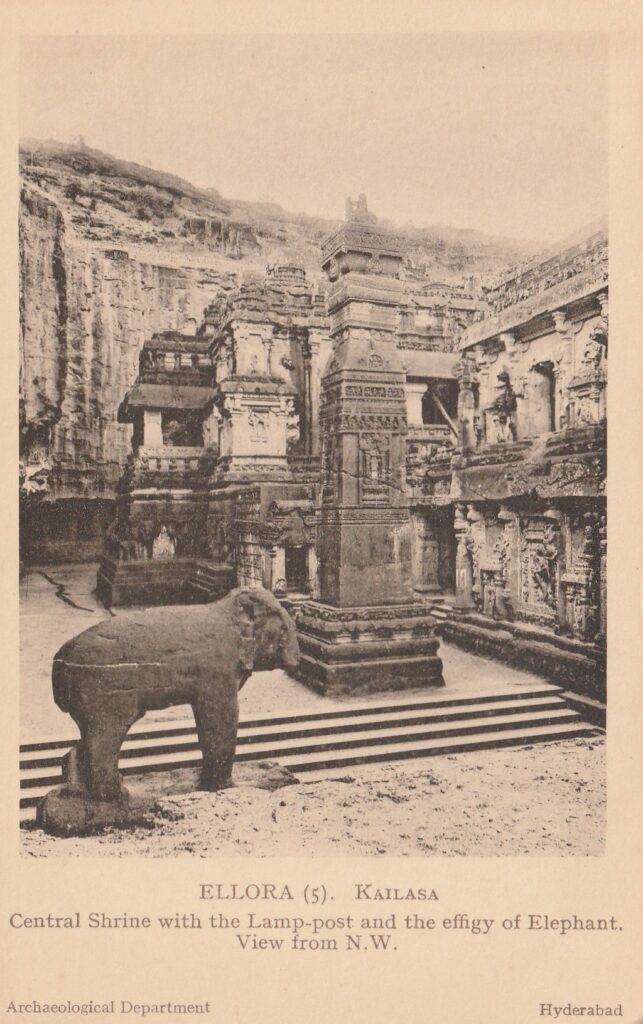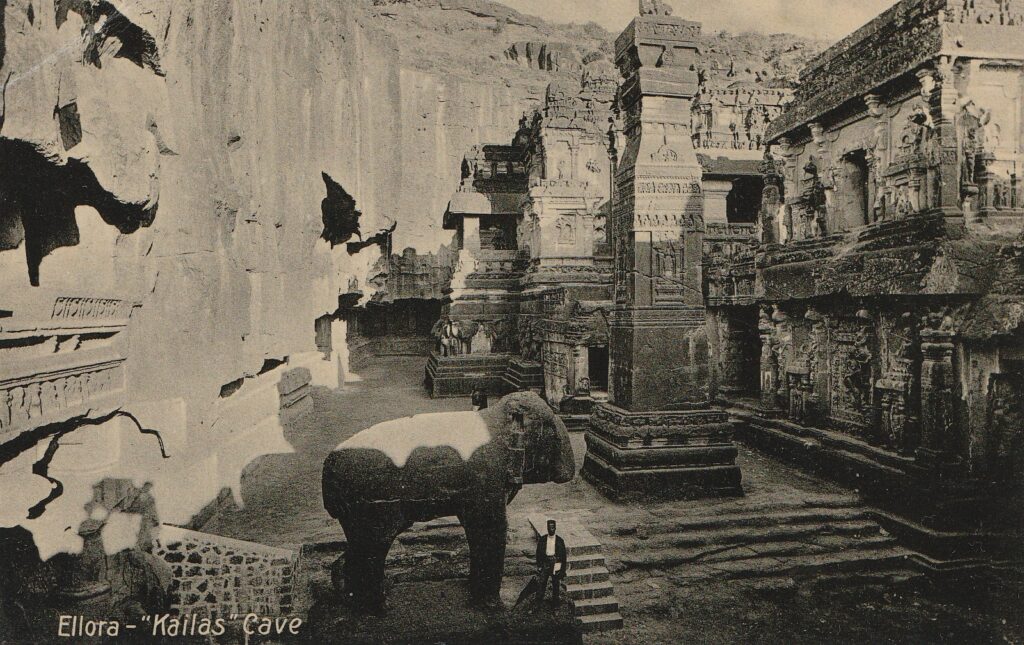Introduction
The Ajanta and Ellora Caves, located in the state of Maharashtra, India, are among the most magnificent examples of ancient rock-cut architecture in the world. These UNESCO World Heritage Sites attract scholars, historians, and tourists alike, offering a profound insight into the artistic, cultural, and spiritual life of ancient India.
The Ajanta Caves, dating back to the 2nd century BCE to about 480 CE, comprise 30 rock-cut Buddhist cave monuments. Nestled in a horseshoe-shaped bend of the Waghora River, the Ajanta Caves are renowned for their intricate carvings, exquisite murals, and elaborate sculptures. These caves were used as monastic retreats for Buddhist monks and illustrate the evolution of Indian art, particularly during the Gupta period. The murals, which include depictions of the Jataka tales, scenes from the life of Buddha, and various celestial beings, are lauded for their vivid detail, emotional depth, and technical mastery. The chaitya-grihas (prayer halls) and viharas (monastic residences) in Ajanta provide a comprehensive understanding of Buddhist monastic life and religious practices.
In contrast, the Ellora Caves, dating from the 6th to the 10th centuries CE, represent a fusion of three major religions: Buddhism, Hinduism, and Jainism. Located about 100 kilometers from Ajanta, the Ellora complex, includes 34 caves meticulously carved into the Charanandri hills. The Ellora Caves are remarkable for their architectural diversity and the ambitious scale of their construction. Among the most famous structures is the Kailasa Temple (Cave 16), a massive monolithic rock excavation dedicated to Lord Shiva, which stands as a testament to the ingenuity and dedication of its creators. This temple, carved from a single rock, mimics a freestanding multi-storied building complete with elaborate sculptures, intricate carvings, and grand pillars.
The Buddhist caves in Ellora, dating from the 5th to 7th centuries, include monasteries and shrines adorned with stunning carvings of Buddha and bodhisattvas. The Hindu caves, created between the 6th and 8th centuries, showcase intricate depictions of various Hindu deities and mythological scenes. The Jain caves, built between the 9th and 10th centuries, are noted for their detailed and refined carvings, reflecting the asceticism and spirituality of Jainism.
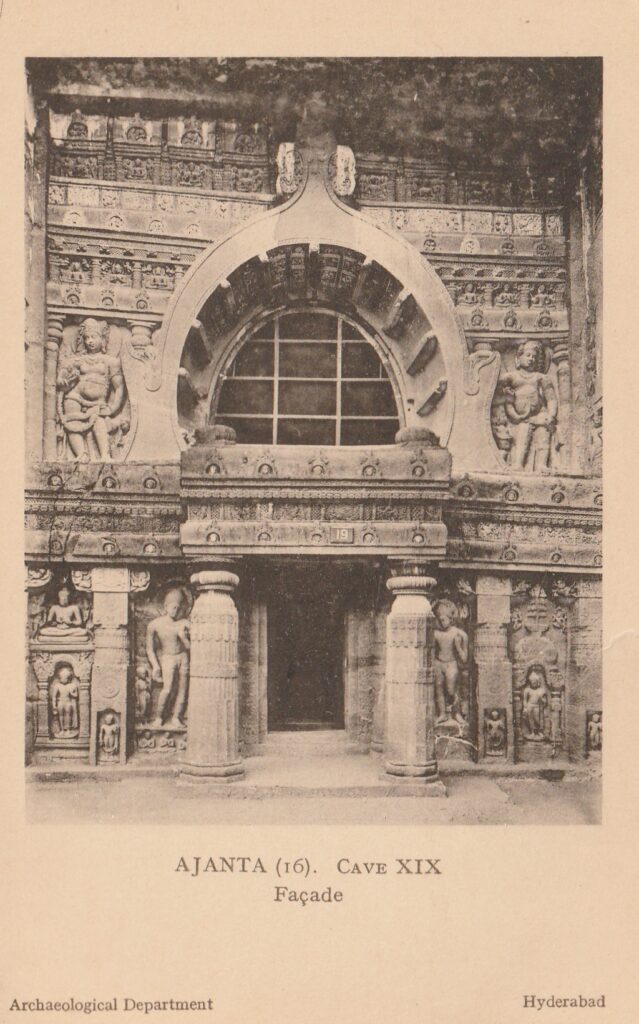
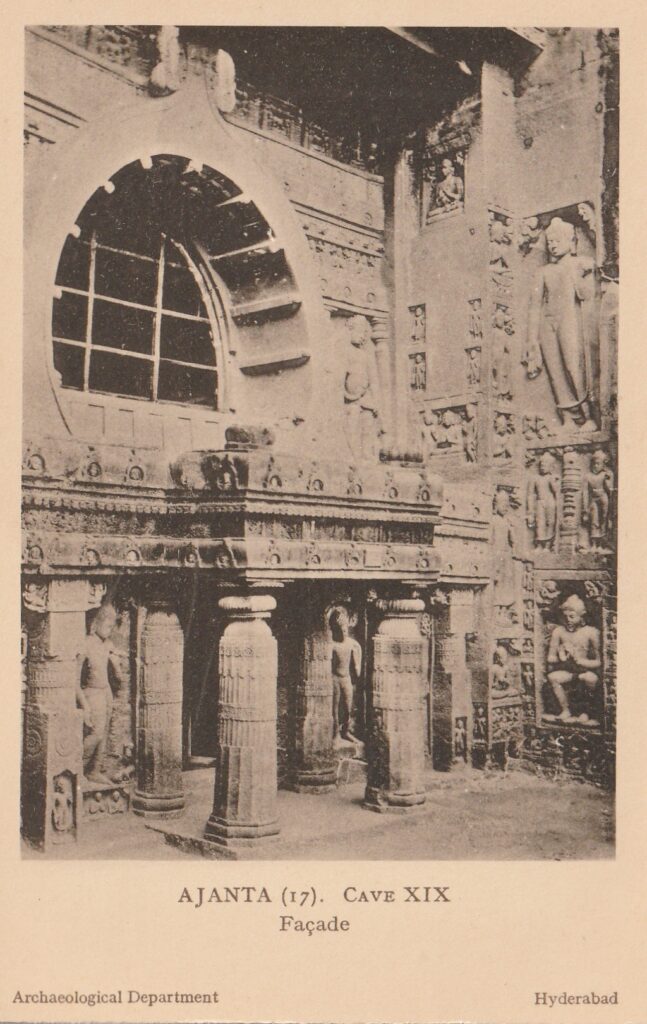
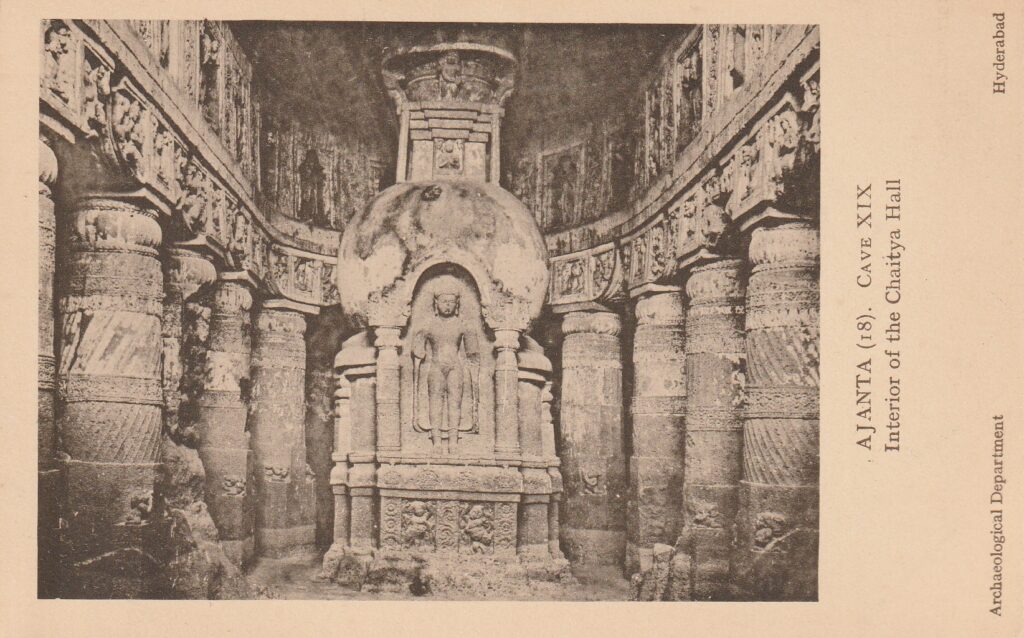

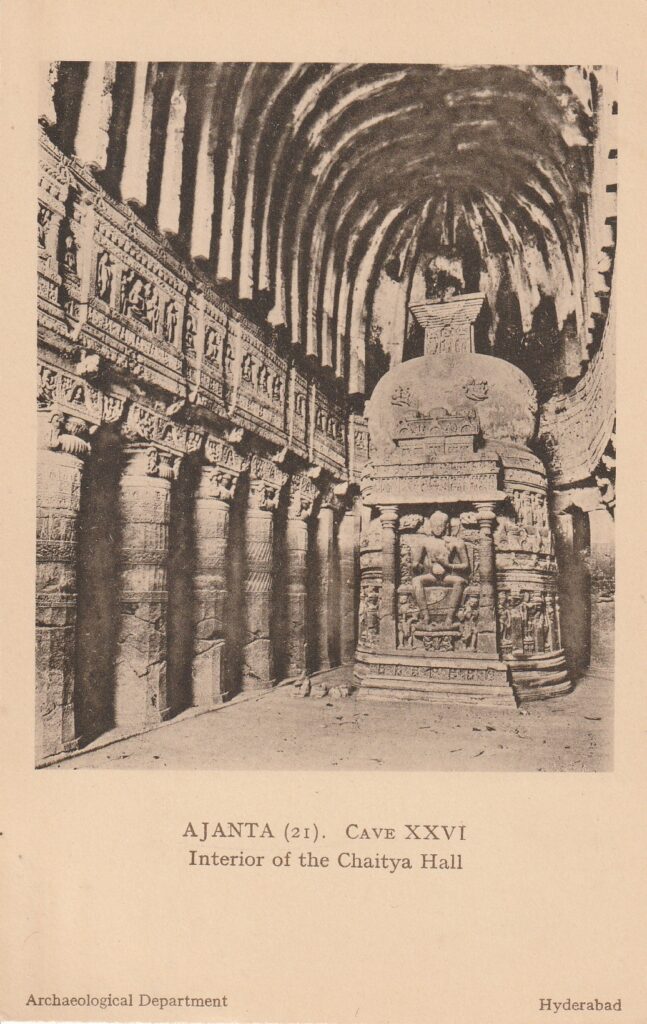
Cave 1 of the Ajanta
Cave 1 of the Ajanta is celebrated for its intricate and well-preserved artwork. The ceiling is particularly remarkable, adorned with elaborate paintings featuring geometric patterns, floral designs, and mythical creatures, showcasing the skill and imagination of ancient painters and reflecting the period’s opulence and grandeur. The murals on the walls include significant scenes from Buddha’s life. Notably, they depict poignant moments involving Yasodhara, Buddha’s wife, such as the emotional departure of Siddhartha (Buddha) from Yasodhara and their son Rahula to begin his quest for enlightenment. Other scenes capture Yasodhara’s deep sorrow and grief, offering a touching insight into her emotional journey. Another key feature of Cave 1 is the depiction of the Chhadanta Jataka, narrating the story of a noble six-tusked elephant named Chhadanta. The murals illustrate various episodes from this tale, such as Chhadanta’s acts of immense generosity and sacrifice,
including giving away his tusks to help others. The story also portrays the queen’s jealousy and revenge against Chhadanta, leading to his noble acceptance of his fate. This tale emphasizes themes of selflessness, compassion, and the consequences of envy and revenge.
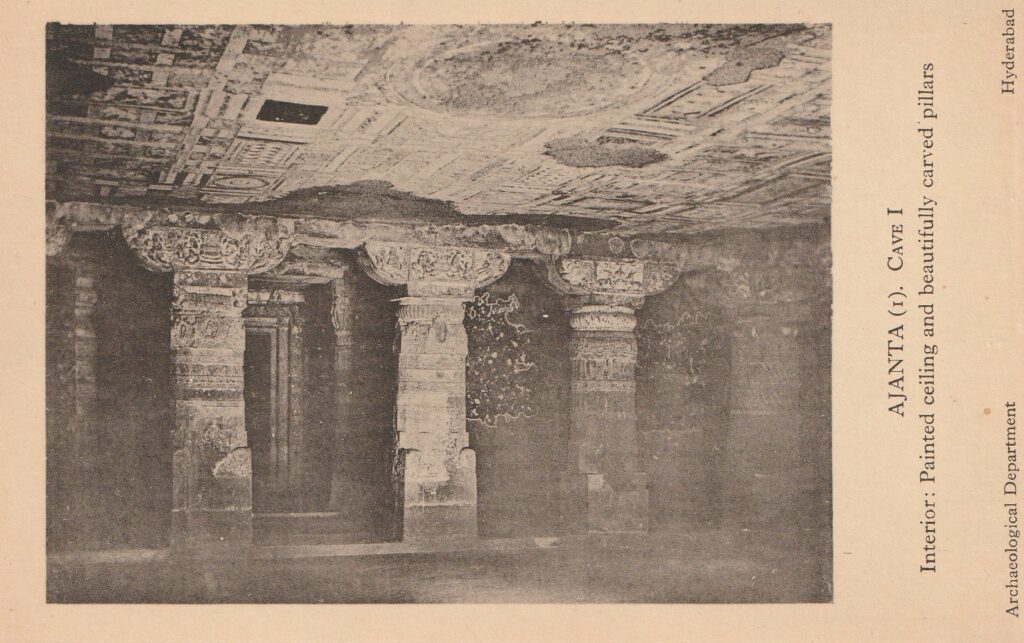
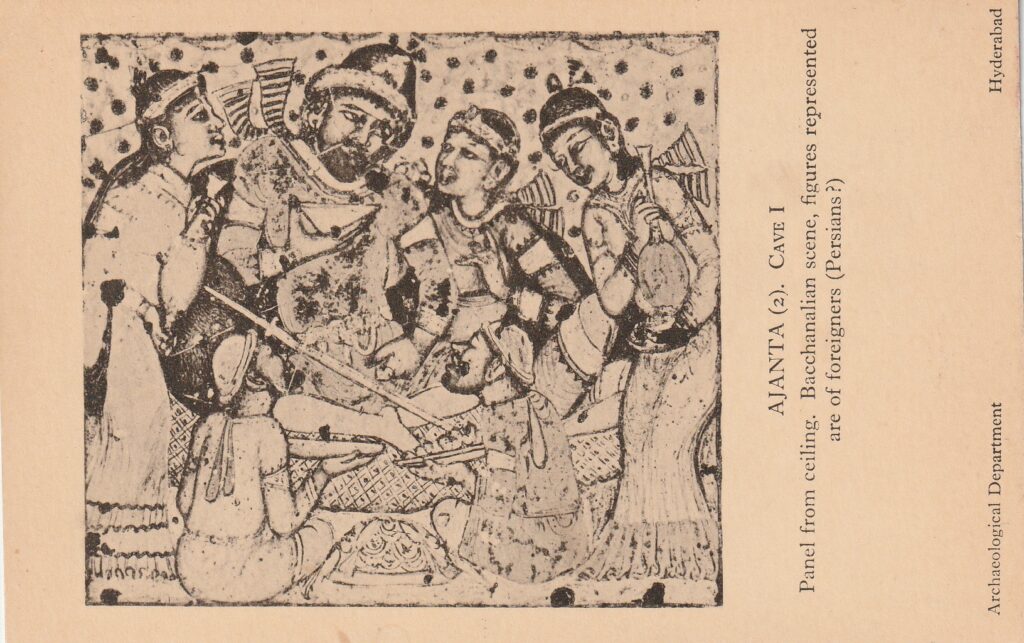



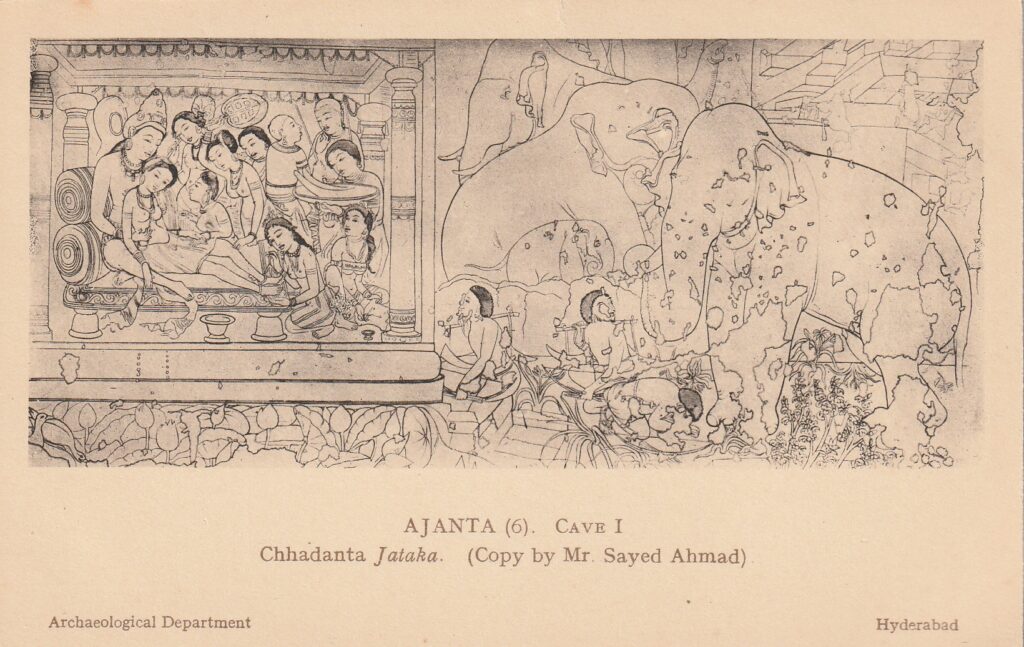
Cave 17 of Ajanta
Cave 17 of the Ajanta is renowned for its extensive and beautifully preserved murals, making it a significant highlight of the complex. Also known as the “Picture Gallery,” this cave showcases an impressive array of paintings depicting various aspects of life, mythology, and spirituality. One of the most touching paintings in Cave 17 is the “Mother and Child” scene, capturing a tender moment of maternal love and care. The intimacy and warmth in this depiction convey a universal sense of familial affection. The “Toilet Scene” is another remarkable painting, offering a glimpse into daily life and personal grooming practices, with women combing their hair and applying makeup, providing insights into ancient Indian social customs.
Apsaras, or celestial maidens, are prominently featured in the murals, depicted with grace and elegance in dynamic poses suggesting movement and dance. These ethereal beings add a sense of divine beauty and charm, embodying ideals of grace and spiritual allure. The verandah of Cave 17 is adorned with numerous other paintings, including various Jataka tales, which are stories of Buddha’s previous lives. Each painting is meticulously detailed, capturing complex narratives and moral lessons with vivid imagery. Other significant murals illustrate scenes of royal processions, courtly life, and ceremonial events, showcasing the grandeur and sophistication of ancient Indian royalty with intricate costumes, elaborate jewelry, and majestic settings.


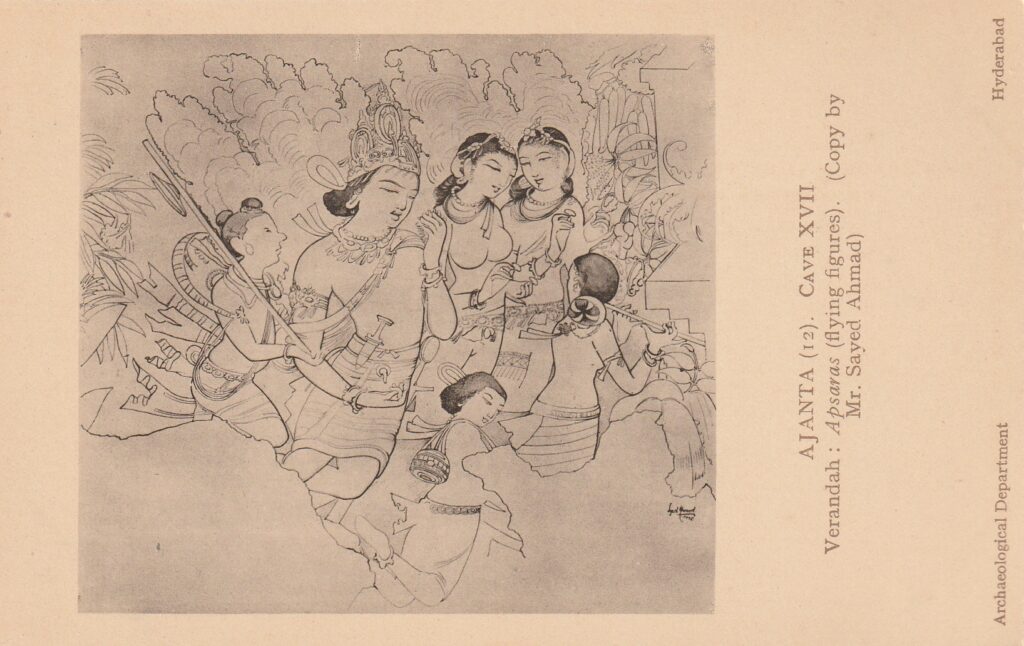

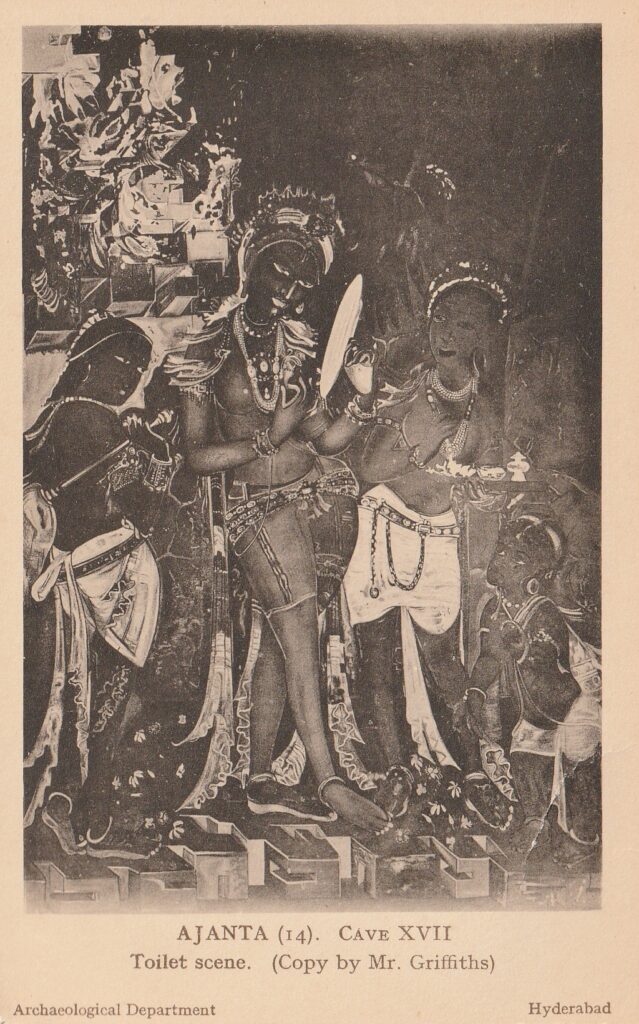
Other Caves in Ajanta
Ajanta cave complex has more than 30 rock-cut Buddhist cave monuments dating from the 2nd century BCE to about 480 CE. These caves are renowned for their remarkable architecture, intricate carvings, and exquisite murals, reflecting the zenith of ancient Indian art and spirituality.
Cave 2 is notable for its vibrant murals, including scenes from the Jataka tales. Cave 6 is a two-storied structure with notable sculptures of Buddha in various poses. Cave 7 features a long verandah and a series of sculptures representing the Buddha in different postures, flanked by bodhisattvas. Cave 19 is a chaitya griha or prayer hall with a grand facade. It features an elaborate entrance and houses a beautifully carved stupa. Cave 22 is a smaller cave but noteworthy for its simplicity and elegance. It contains a shrine with a seated Buddha and has some remarkable sculptures of attendants.

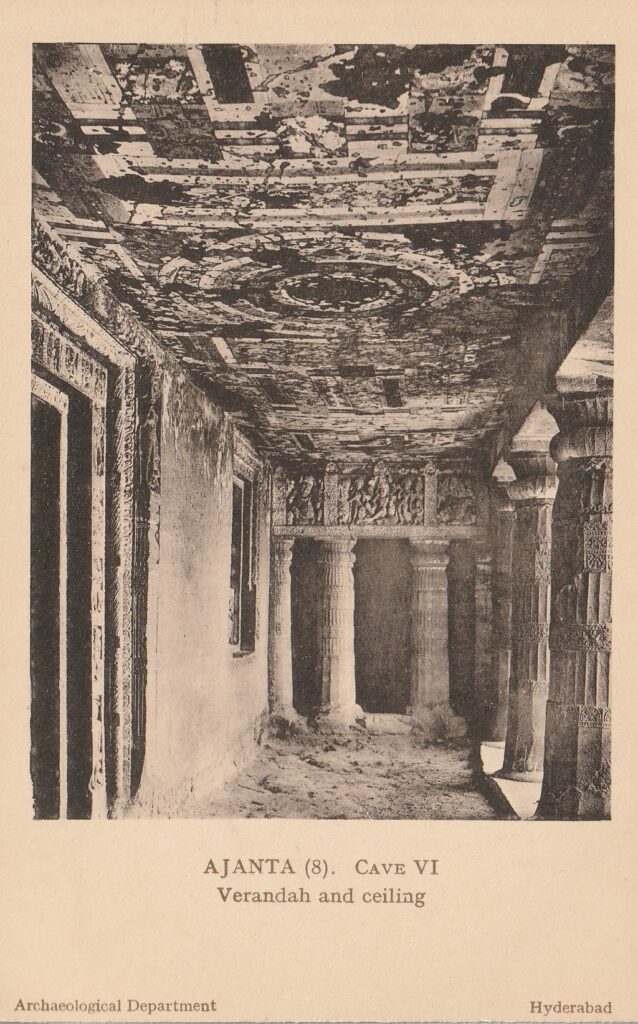
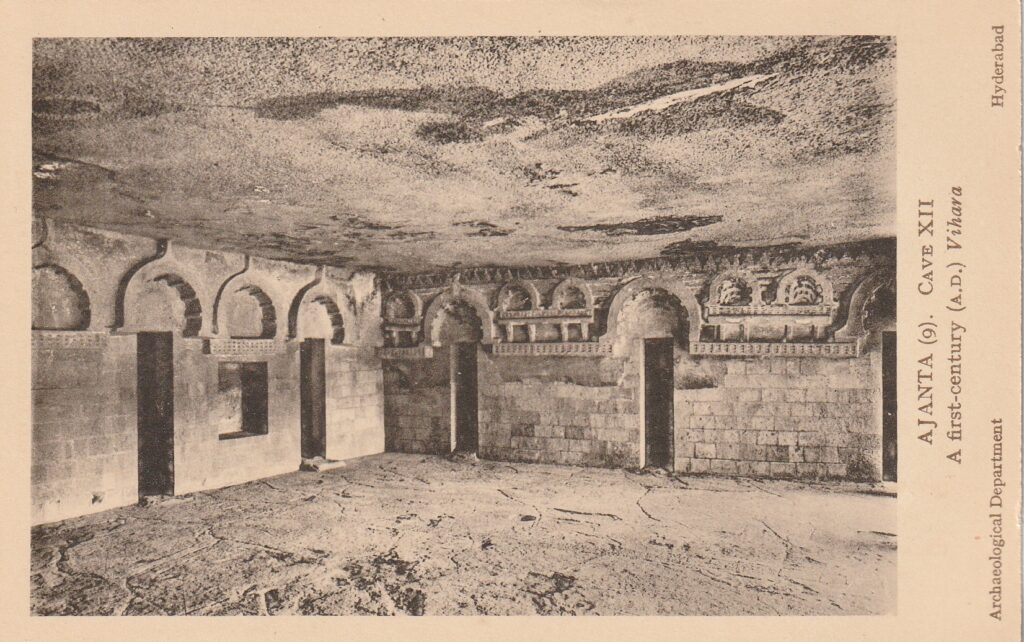

Kailasa Temple – Ellora
The Kailasa Temple, also known as Cave 16, is the most famous cave at Ellora and is dedicated to Lord Shiva. It is considered one of the most remarkable examples of ancient Indian rock-cut architecture and is believed to have been built during the 8th century CE. The Kailasa Temple is a massive structure, carved entirely out of a single rock, and is estimated to have taken over 200 years to complete. It is the largest monolith structure in the world.
The temple’s exterior is intricately carved with various sculptures and reliefs depicting Hindu gods and goddesses, mythological scenes, and other decorative elements. What is particularly remarkable about the Kailasa Temple is the level of detail and intricacy in the carvings and sculptures, which are considered some of the finest examples of ancient Indian art. The temple is a symbol of the remarkable artistic and architectural achievements of ancient India and remains an important cultural and religious heritage site. Above card shows the picture of Kailasa temple, Observe Mahabharatha Panel at the center ( below stamp) The interior of the temple features a central shrine with a lingam (a symbol of Lord Shiva), surrounded by sculptures and frescoes of various Hindu deities and scenes from Hindu mythology. The temple also features several other smaller shrines, mandapas (pillared halls), and courtyards. Kailasa interior , shows the shrine which is plain cut and 15 feet . square of the kailasa which is one of the most magnificent and interesting of all the architectural objects which India possesses.

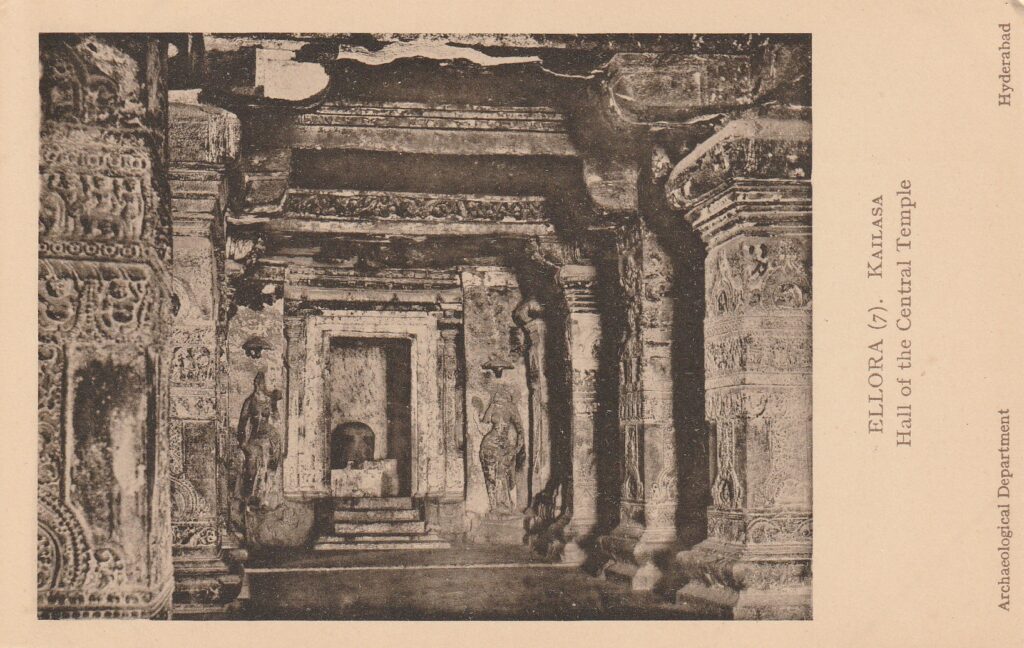



Rameshwara Cave – Ellora
At a distance of 400 m from Kailasa Temple, Cave 21, also known as Rameshwara Cave, is located midway between Cave 16 and 29. The Rameshwara Cave is believed to have been built during late 6th century AD and is supposed to be the earliest among the Hindu Caves at Ellora and also one of the noteworthy caves in Ellora. This cave is famous for the sculptural representations and its unique beauty.
This cave is also dedicated to Lord Siva who was worshipped in the form of linga. A Nandi is placed just in front of the cave over a raised platform. The cave consists of a rectangular mandapa and the sanctum. The mandapa is provided with a dwarf wall which is fully sculpted on the exterior in vertical and horizontal bands. The entrance to the mandapa is flanked by sculptures of River goddesses Ganga and Yamuna. Pillars emerge at regular intervals from the dwarf wall with very beautiful and elegant salabhanjikas.


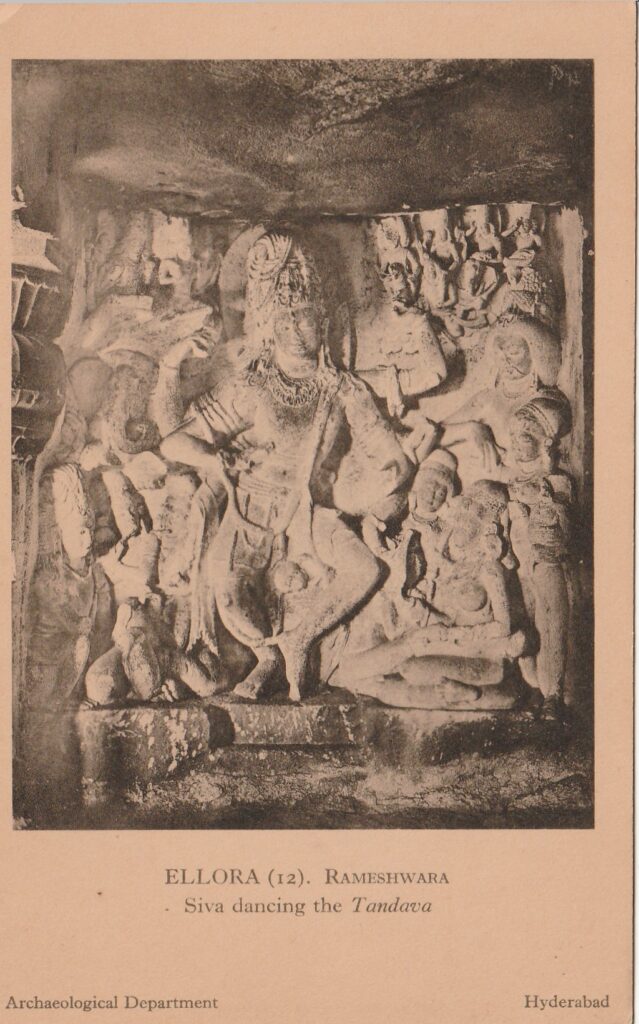
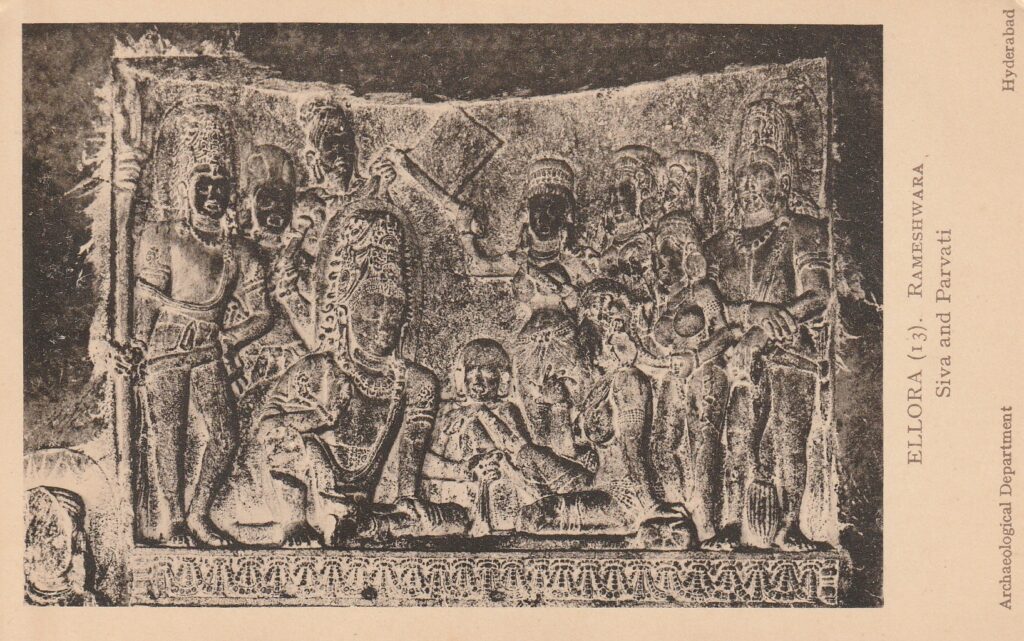
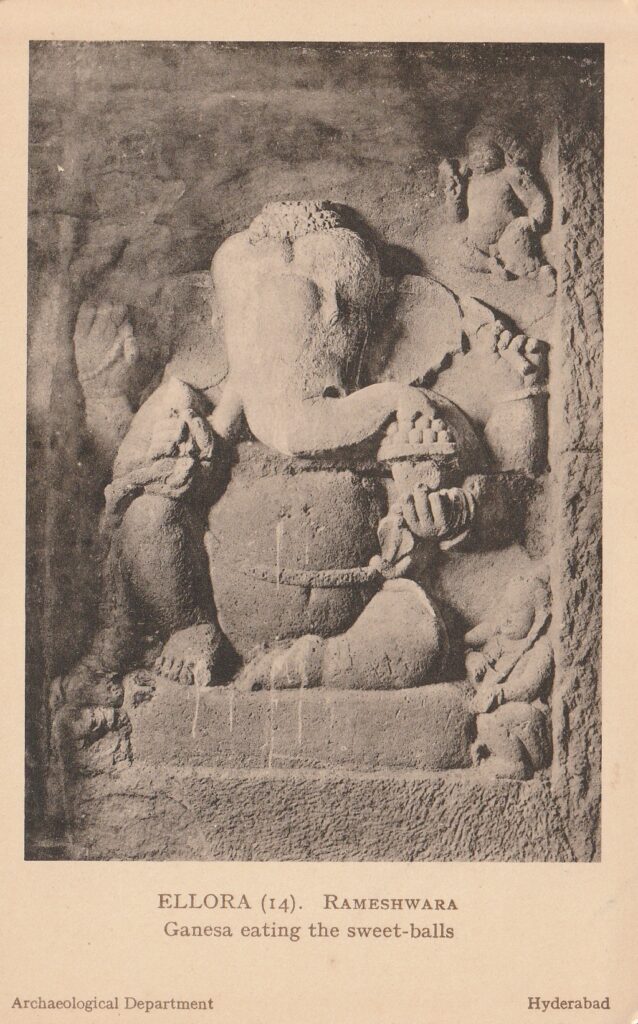

Dumar Lena – Ellora
At a distance of 850 m from Kailasa Temple, Cave 29 is also a Hindu Cave situated to the north of Kailasa Temple in Ellora. This is the earliest and last Hindu excavations to be completed at Ellora. Also Known as Dumar Lena, Cave 29 is another important excavation at Ellora by the side of Sita-Ki-Nahani, a pool created by a waterfall in the Elaganga River. Dated to late 6th century AD, Cave 29 is said to be influenced by the pattern of the Elephanta Caves near Mumbai.
This cave is compared with the ones at Elephanta and Jogeswari Caves but this one is larger, finer and of a later age. This is the best preserved and largest of all the three, which were executed on the same plan. The Dumar Lena consists of an isolated shrine located within a group of halls arranged on a cruciform plan. The entire excavation extends to almost 250 feet. The shrine houses a huge linga entered through four entrances flanked by huge dwarapalas. Two large lions with small elephants under their paws guard the steps which lead to the hall from three sides.


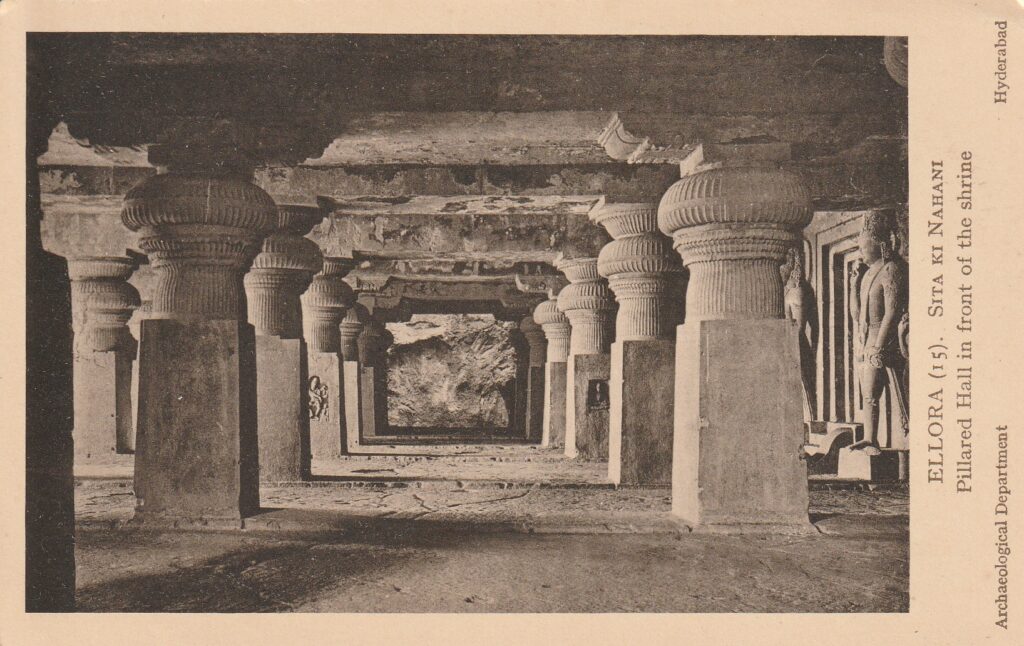
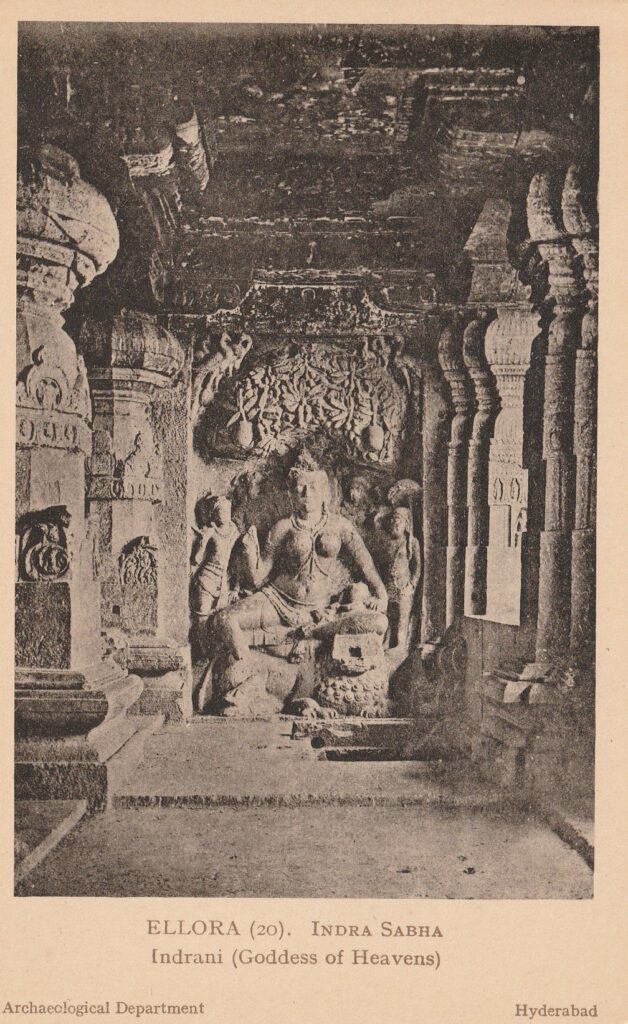
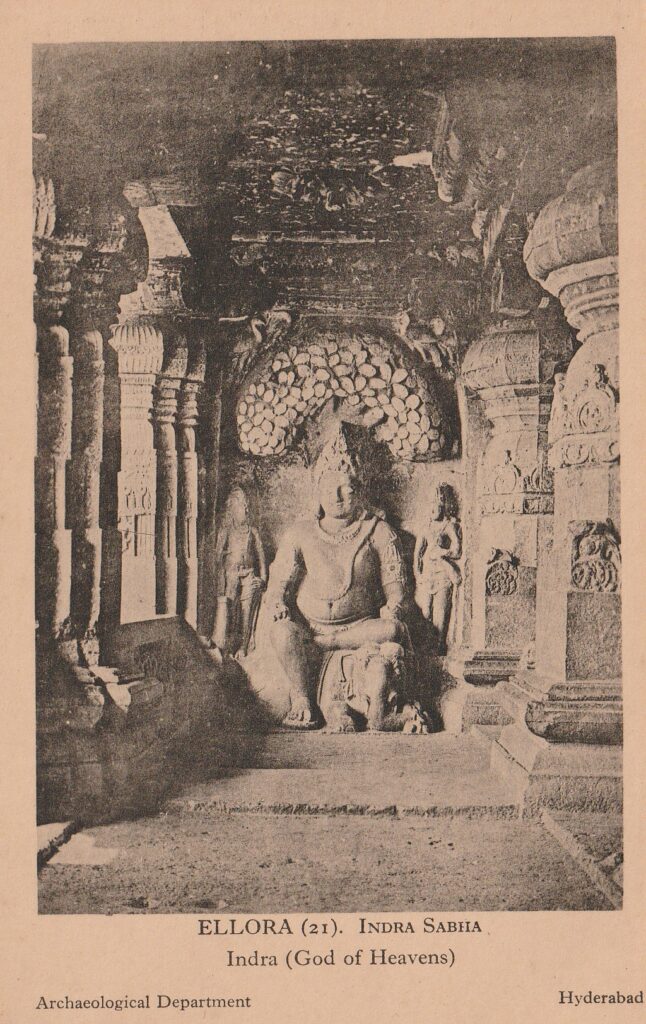




The halls are adorned with six huge sculptural panels depicting various episodes connected with Lord Siva. They are Ravana Shaking Mount Kailasa, the celestial marriage between Lord Siva and Parvati, Andhakasuravadamurti, Siva and Parvati playing chausar, Nataraja, Lakulisa (form of Lord Siva). River goddesses are positioned outside the north and south entrance. This cave also has two mysterious sculpted depressions, one on south and other on the north. The exact function of these depressions is not clearly understood. Various identifications have been proposed, the prominent among them is that they are religious Vedic altars used at specific important religious rituals.
The Indra Sabha (Cave 32), excavated in the 9th century, is a two-storey cave with a monolithic shrine in its court. 19th-century historians confused the Jain Yaksas for alternate images of Indra that were found in Buddhist and Hindu artworks, thus leading to the temple being given the misnomer “Indra Sabha”. Indra is an important deity in all three major religions, but is of particular importance in Jainism as not only is he one of 64 deities who reign over the heavens, he is, specifically, the king of the first Jain heaven, Saudharmakalpa, and the chief architect of the celestial assembly hall according to the Adipurana, a Jain holy text.
The Indra Sabha Jain Temple is historically significant as it contains evidence, in the form of layered deposits and textual records, of active worship inside by the Jain community. In particular, rituals were known to have been held in the upper level, where the artwork may have played a central role. The cave is called Tin Thal, which means “three storeys,” because it features a multi-storeyed structure with three levels, making it the only multi-storeyed cave at Ellora. The cave has a chaitya hall (prayer hall) on the ground floor, with a large stupa and a 15- foot statue of Buddha seated in a preaching pose. The hall is decorated with sculptures of various Buddhist figures and symbols, including Bodhisattvas and Yakshas.

Mr. Akhil Reddy is a renowned philatelist and currently resides in Bangalore. He received his engineering degree from SJC Institute of Technology in Chickballapur and is currently employed as a Lead IT systems engineer. He also collects picture postcards, postal history, coins, maps, books, and other collectibles related to the Princely State of Mysore and the Temples of India. He is accumulating them all in preparation for future studies and exhibitions on respective subjects. He is the General Secretary of the Karnataka Philatelic Society, Bangalore. and also a member of The Revenue Society, The Royal Philatelic Society London, India Study Circle, and a life member of The Philatelic Congress of India and South India Philatelists’ Association.

